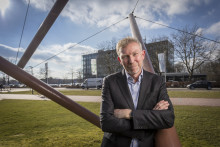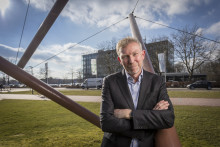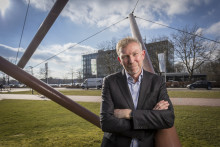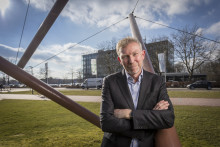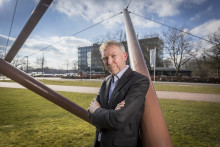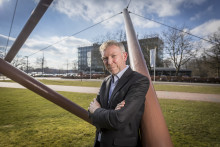The UT’s new mission and vision are characterised by the fact that people and society come first when creating and applying technology. ‘Although this is reflected in our slogan, we have never had a clearly defined mission. The first thing we therefore did was determine why we exist as an organisation,’ Van der Chijs says. ‘It boils down to this: as a technical university, we provide our own answers to society’s challenges. Technology has myriad benefits, but there are also unwanted side-effects, e.g. growing social differences. As a society, we have to handle those issues correctly. We strive to be the ultimate people-oriented technical university: people come first in our education and research. We recognise and accept our social responsibility.’
The chairman of the board adds: ‘We want to set ourselves sufficiently apart from other institutions. When you look at the missions and visions of other technical universities, you will see that none of them put people first. First and foremost, they are interested in technology.’
Three challenges
Partly with input from the so-called inspiration sessions held in recent months, the UT formulated three challenges in its vision that it wants to respond to: the growing social divide, sustainability and digital transformation. Van der Chijs: ‘There are those among us who cannot keep up with new developments or are frightened by how technology impacts their careers. The UT’s job is to make clear choices and help society treat technology responsibly.’
Sustainability represents another major challenge. ‘In our own way, we contribute to the effort to keep the population and our environment healthy. We do so not only by making our campus greener, but also by making the right choices in our educational programmes, research projects and business operations,’ says the chairman.
Charting a course
To achieve its mission, the UT has to make certain choices. ‘Rather than compete with other institutions, we explicitly chart our own course and lead the way,’ Van der Chijs states. A remarkable move is the UT’s intention to set up a new entity based on innovation, in addition to the existing organisation. It is still unclear at the moment what this will look like. Based on the concept vision, there will be room to experiment with new ideas without any risk of compromising the affairs of the current organisation. ‘This allows us to introduce new forms of education, research and innovation and offer students, civilians and businesses opportunities in an international context that are currently impossible,’ says Van der Chijs.
According to the chairman, this is a new and necessary step for the university that relies so heavily on entrepreneurship. ‘Others copied what we did. That means we now have to take the next steps in the field of entrepreneurship. We aim to set a new standard of collaboration between university, industry and society. This entity can be part of that. If we want to make a difference as a university, we must also become a different kind of university.’
Students first
Another choice that the UT has made as part of its new vision is the creed that students come first. ‘We expect people’s educational needs to change significantly over the course of the next decade or so,’ Van der Chijs explains. ‘As a result of life-long learning, it is likely that the lecture rooms will be populated by professionals as well as students. That can even go as far as a retiree who wants to learn more about nanotech. We think part of the answer to this need for life-long learning is flexibility: offering digital education or education at different locations. The programme we will offer together with the VU is just one example of this. We strive to intensify our collaboration with other institutions as well – as part of 4TU on a national level and in the ECIU at the European level. ‘Students come first’ means that we must be wherever our students are and that we must be relevant for every phase of their professional careers. In all of this, our campus will still be the place where everything comes together.’
In addition to students, staff members can also expect more freedom and flexibility in the years leading up to 2030. Van der Chijs: ‘We will set up our organisation in a learning manner. After all, we are only as good as the sum of our people.’
Developing a strategy
Now that the UT’s mission and vision are almost complete, the next step is to devise a strategy for the upcoming three years. Van der Chijs explains that the concept strategy must be done after the summer. ‘In twelve years or so, we will be a different university, but the road leading up to that point is a gradual one. The first steps will be reflected in our strategy. It must be a strategy for the entire organisation, which means we will have to make choices – in a financial sense as well, i.e. in terms of both money and capacity.’


